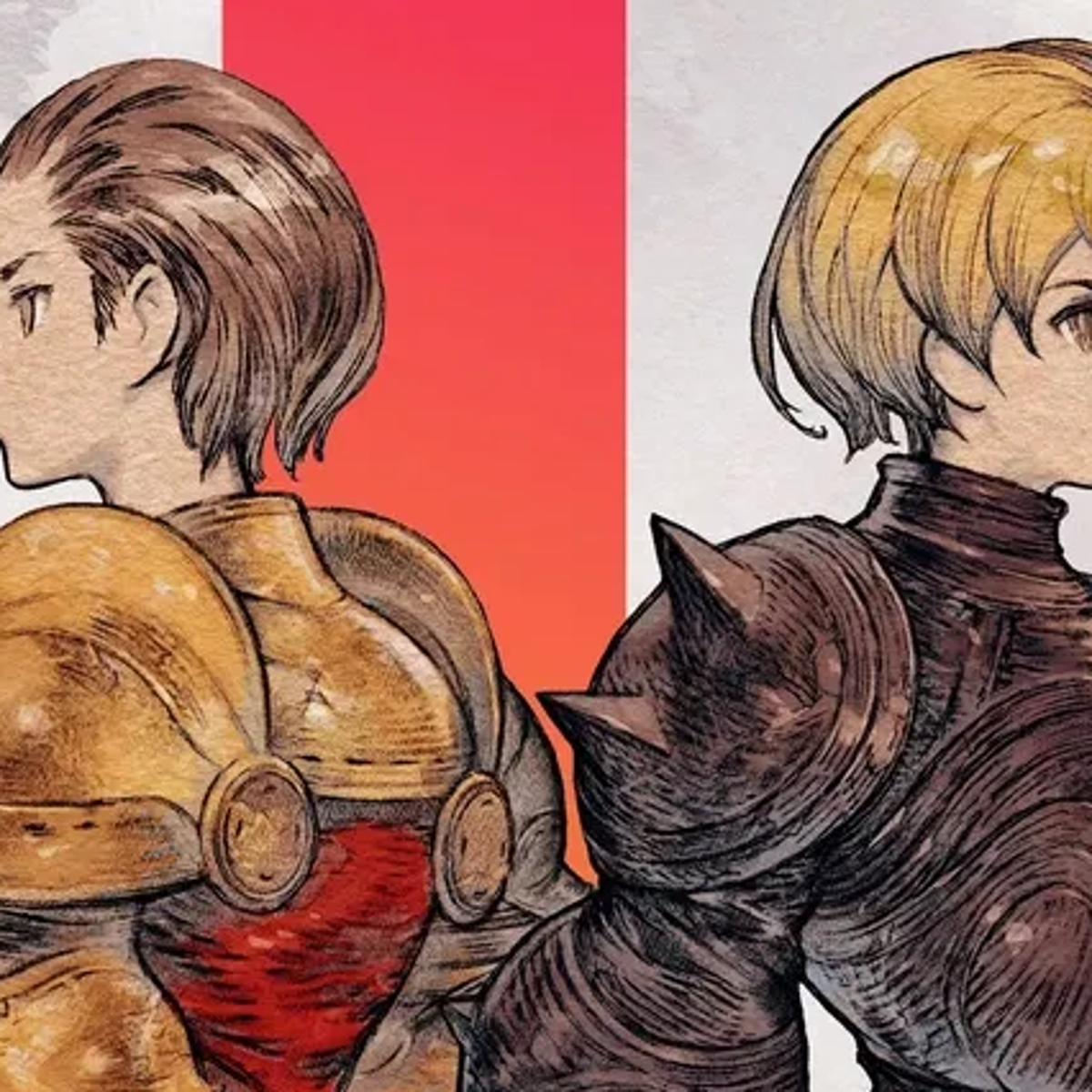By Dom Peppiatt
Copyright eurogamer

The story of Ramza Beoulve is presented to you as a historical accord – an account of a tale recorded by one historian and told to you by another. It’s subjective, an interpretation of loose facts collected by an archivist with a notable bias: to celebrate the achievements of your protagonist, a man whose influences and inspirations have been concealed by the church. As such, different readings of this story can proffer different results. Historical records are spotty at best, and even when written by the victor, choose to omit often-important facts.
At least, that’s my head canon going into Final Fantasy Tactics: The Ivalice Chronicles. By framing the story as a tale told from the annals of history, Square Enix has accidentally given itself carte blanche to release this as many times as it wants – how many essays, romantic novelisations, TV shows, or films do we get interpreting historical events, year after year? It’s par for the course with classic texts, and Ramza’s tale is about as classic as it gets for video games.
That’s why I don’t mind some of the liberties The Ivalice Chronicles takes with the 1997 classic. If I wanted the untouched, warts-and-all version of the PlayStation game, I’d go and play the PlayStation game (or the classic version that’s shipped more-or-less intact as part of The Ivalice Chronicles, pixel art and all). But I don’t. I’m keen to see this reinterpretation of the text, hungry for a reappraisal of the Japanese foundation some 28 years later.
Mechanically, Final Fantasy Tactics remains timeless. It may not have been the first ‘proper’ Tactics-style game out there, but it remains one of the best. There’s a simplicity to it that sequels and other franchises don’t seem to understand, a Zen minimalism to the choice of units on offer and the actions they can take. Thanks to the quirks in the levelling system, you can completely break the game in the first four hours, if you want. Standing in a field and shouting and pelting stones at your mates for a few days, it turns out, gives you the strength to kill gods. But maybe that reflects the bond you form when travelling with your allies, bedding down in mountain passes with them, standing shoulder-to-shoulder in defiance of the state with brothers-in-arms?
Or maybe that’s just the narrative I like to project onto these things. But having small party sizes (typically five or six units), and a core cast of well-written, well-realised characters, these little stories come naturally. Ramza, destined to be a knight in both narrative and because of his stats, often holds the frontline for me, whilst a no-name mercenary I picked up in the first town is now a legendary ninja, stalking the backlines and picking off healers and archers before anyone knows he’s even there. You’ve got the cavalier Mustadio shooting weapons out of hands or hobbling units so that they cannot flee, as they watch in horror as my Summoner calls Bahamut down to decimate an entire legion in one bright, horrible Mega Flare.
Some of the most disgusting fights in the game are still here, intact. But that’s fine, because you can either enter these encounters with honour and watch with revulsion as the enemy permanently destroys all your treasured weapons and armour, or go in with a cheap strategy that is so unbelievably crass, you cannot fathom how it was ever an option intended by the developers. But it was, and still is today. The wealth of options available to you at any time borders on the obscene – and it all comes from such a tight, well-considered little sandbox of options, it’s almost unbelievable to see the flowchart come to life in front of you.
For Tactics veterans, the most glaring omission from other readings of the text comes from The War of the Lions, the PSP port of the game that added new characters, classes and cutscenes. I like this purity, but I know many others do not. To me, it feels like a more authentic survey of a classic – and that’s how this experience should be savoured.
But for everything Square Enix has taken away, it’s given twice as much back. Ramza’s tale of class struggle – of a land under the yoke of dogmatic oppression, of an aristocratic activist shirking off his high-born status – is more accessible here than it ever has been before. And rightly so: the initial aim of Tactics’ designer, Yasumi Matsuno, who was originally the lead designer of the sublime-but-abstruse Ogre Battle series, was to make a tactical role-playing game that was more accessible to the average gamer. In fact, his aim was twofold: present the genre to more people, and pen a story about class war and the perils of unreliable historical accords. Go figure.
In The Ivalice Chronicles, the translation and localisation is leagues better than in the original release (the Assassin’s ‘Stop Breath’ function is no longer called ‘Stop Bracelet’, for example) and the voice acting is one of the best additions to the whole experience. In fact, I think it may be one of the best examples of voice lines being retroactively added to a game I’ve ever heard. For all its other achievements, Tactics Ogre Reborn missed the mark with its voice acting back in 2022, but Tactics feels much more on point. The direction is stronger, and (perhaps due to the strength of the core material) the vision is more defined: The Ivalice Chronicles feels more like something put on by the Royal Shakespeare Company than your bog-standard anime gloss-over. House of the Dragon alumni Emily Carey and Final Fantasy 16’s Ben Starr are excellent. But most of my praise is reserved for Joe Pitts as Ramza: somehow, his voicework characterises our young reactionary better than I ever did in my head, and I can’t really imagine how I’d play this game now without his artisanal blend of naive optimism and cynical grit breathing life into his 32-bit portrait.
There’s a lot of really nuanced, specific lore to this game. Of course there is: Ivalice is the most ‘fleshed out’ Final Fantasy world in the series’ history, with Final Fantasy Tactics, Vagrant Story, Final Fantasy 12, Final Fantasy 12: Revenant Wings, Final Fantasy Tactics Advance, Final Fantasy Tactics A2: Grimoire of the Rift, and oft-forgotten tower defence spin-off Crystal Defenders all taking place in this universe (albeit centuries apart, in some cases). Though the connections between the games are vague – at best – it’s still nice to be able to digest the tomes of history at your leisure, and see how the battles you’re engaging in relate to the overall account being told. The lore tab is actually very similar to what was in Final Fantasy 16, which makes sense because both games have been handled by Square Enix’s Business Unit 3. It’s a small addition, but does great justice to the depth and complexity of Ivalice, and is a fascinating way to help you orient yourself in its world.
Then there’s the UI. I’d expect an update nearly three decades in the making to fold in some of the learnings we’ve uncovered about user experience, but it’s the subtlety of Tactics’ updates that makes it notable. Holding R1 (or your shoulder button of choice) to speed up animations and fast-forward the action is a more involving and engaging technique than slapping on a binary on/off toggle. You can fast-forward movement and attack spin-ups and then slow down to see exactly where an enemy unit is targeting or how much damage it’s portioning out, giving you more atomic control over what you do and don’t need to pore over. This – as well as the autosave – is an absolute godsend when you’re grinding or replaying a tense battle.
For those of you whose affinity for tactical role-playing games was awakened with the 3DS Fire Emblem games (I know there’s a lot of you), Square Enix has pilfered the Intelligent Systems-like UI that denotes key combat info for easy perusal whenever you’re readying an attack: at a glance, you get your chance to hit, your estimated damage, and some basic information how all that information has been calculated (affinities, elevation, whether your attack will be countered, and so on). It feels like it’s always been there, but a quick boot of the original game from the main menu proves that it hasn’t. And how I lived without it before, I’ll never be able to recollect.
To get further into the mechanical minutiae, turn order is added to the left-most side of the screen, taking advantage of the 16:9 aspect ratio and slotting this vital piece of information somewhere where it’s visible, but unobtrusive. It’s a game-changer. Mages, typically, are glass cannons, so knowing an enemy archer can snipe you before you’ll get your Meteor to rain down on the boss is a pretty vital piece of knowledge to be able to see on-screen, and not just hold in your head. It makes the game friendlier to play, which is a huge boon if you want to play around with the updated difficulty options (pared into Squire, Knight, and Tactician, with the hardest being the latter, and most in-line with the PlayStation experience).
As much as I think this is a near-definitive version of the Tactics experience as you could hope to get from a remake in 2025, there are one or two small, odd choices in the whole package. The biggest gripe die-hard FF fans have with the overall Ivalice Chronicles proposition is the graphical style; why isn’t there an option to play the remastered aspects with the old visuals? Why is the classic pixel art confined to the base game, accessible only without all the bells and whistles?
It’s not that the visuals are ugly (in fact, they really grew on me over the course of my 60 hours with the game). And it’s not your standard pixel-smoothing here – the individual squares are still there, and work nicely in HD. The result of whatever processing filter Square Enix has used is watercolour-like, a painterly effect that works well with this once-doomed world that is going through its own revolution and renaissance as it claws itself out of the hole of a long-past cataclysm. But the fact you’re forced to play with this style if you want the voice acting, your lore encyclopedia, the updated UI, and some tweaked difficulty is a slight shame.
But that’s not enough to mar the shine of this remaster. Square Enix rewrites history with Final Fantasy Tactics, but to its benefit. One of my favourite books of all time is Anthony Bourdain’s Kitchen Confidential. The ‘Insider’s Edition’ of the title had Bourdain go back over the book – in pen – and cross out entire sections that no longer represent his views, annotate passages with updated anecdotes, and provide commentary on what was going on in his head at the time. It’s a sublime reevaluation of a text, and you gain so much more from seeing him critically rethink his work than you do from reading the base version. That’s what Final Fantasy Tactics: The Ivalice Chronicles feels like to me. That we’ve been fortunate enough to see director Kazutoyo Maehiro and designer Yasumi Matsuno come back to this game and annotate the original experience with the benefit of 28 bonus years in the industry is a treat, a rarity, and gives so much more context and validity to a re-release that could have been a cash-in.
“Now, in 2025 – a time when inequality and division are still deeply rooted in our society – I offer this story once again,” Matsuno said in a statement leading up to the game’s launch. “The will to resist is in your hands.” Final Fantasy Tactics has always been an important game. What a joy it is for this release to let more people realise that for the first time, or once again.
A copy of Final Fantasy Tactics: The Ivalice Chronicles was provided for this review by Square Enix.



